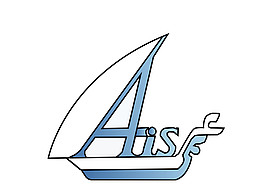Region
The Arab population of Bushehr and Hormozgan
Today, around four percent of the Iranian population is ethnically Arab. While most of them live in the southwestern province of Khuzestan, smaller Arabic-speaking communities can be found among the Khamseh-nomads[1], Khorasan[2], Kerman, Lorestan, Qom and in the Highlands of Tehran[3], and in some villages in the north of the Ilam province.[4] In the two south Iranian provinces Bushehr and Hormozgan the proportion of Arabic-speaking inhabitants is somewhat larger. According to a first survey undertaken by the project Atlas of the Languages of Iran (ALI),[5] there exist about 50 Arab settlements in Bushehr. According to Nadjmabadi,[6] twelve settlements are inhabited by an Arabic-speaking population in the district of Gavbandi (Hormozgan) alone.
Ever since the pre-Islamic period, there has been vivid exchange between the coastal areas on both sides of the Gulf and intimate relations between the Iranian and Arab populations.[7] Especially since the beginning of the 7th century, after the conquest of the Sasanian Empire, Arab tribes have crossed the Persian Gulf and settled in the southern regions of today’s Iran.[8] According to Nadjmabadi,[9] there is no account of continuous settlement of Arab tribes on the central stretches of the south Iranian coast between Kangan and Bandar Lengeh before the beginning of the 18th century. However, the results of our linguistic analysis of the dialect of Bandar Moqam (Hormozgan) suggest that the Arab presence there dates back to an earlier period. [10]
During the chequered history of the region there were periods when Arab tribes controlled the whole coastal region. According to Niebuhr who traveled through the region in the 18th century, almost all important harbors were under Arab control.[11] In the 19th century, Pelly reports that three quarters of the population between Deylam und Kangan were Persian and one quarter Arab. By contrast, in the region between Kangan and Bandar Lengeh the proportion was inverse.[12] However, the continuous settlement of Arab tribes in the region, which seems to have been encouraged by the weak central government of the Zand dynasty (1750-1797), came to an end during Reza Shah’s (1925-1944) policy of centralization.[13] Since the discovery of oil deposits in the region at the beginning of the 20th century and especially since the early 1990s, the demographic, economic and socio-cultural situation in the Arab villages along the coast has drastically changed due to the high influx of workers from the surrounding highlands and other parts of Iran who found and still find work in the oil and gas fields and the industrial plants, most notably in the region of Asaluyeh. Despite the high number of Persian settlers, most villages have remained predominantly Arab and Arabic-speaking during the last century.
[1] Dahlgren 2003
[2] Dahlgren 2005, Seeger 2009
[3] www.irancarto.cnrs.fr/record.php
[4] Gheitasi et al. 2017: http://iranatlas.net/index.html?module=module.language-distribution.ilam.
[5] LINKS: http://iranatlas.net/index.html?module=module.language-distribution.bushehr;
http://iranatlas.net/index.html?module=module.language-distribution.hormozgan; www.irancarto.cnrs.fr/record.php.
[6] Nadjmabadi 2005.
[7] Vgl. Nadjmabadi 2005, 2009, Nöldeke 1879, Wilson 1928.
[8] Hinds 1984, Holes 2018
[9] Vgl. Nadjmabadi 2005, 2009.
[10] Vgl. Leitner et al. 2021.
[11] Niebuhr 2007.
[12] Pelly 1864.
[13] Vgl. Nadjmabadi 2005, 2009.
Work, identity, culture
Traditionally the inhabitants of the Gulf area were farmers, fishers and pearl-divers. In the recent past, the main source of income has been work migration to the Arab states, which may have had a considerable linguistic impact. There is ongoing contact between family members between both sides of the Gulf, today also via social media.[1] However, the Arab minority in the southeastern Gulf region has a different approach to their identity than the more nationalistic Arabs of Khuzestan. According to Nadjmabadi, they consider themselves both “Arab” and “Iranian”. [2] This attitude is also reflected in their high degree of bilingualism, which in turn induces a strong influence of Persian on the Arabic dialects in this region.
Culturally, the Arab minorities are part of a cultural region that transcends the political boundaries of the two provinces. This cultural region is called ǧunubi (southern) or bandari (belonging to the harbor). It encompasses the provinces of Khuzestan, Bushehr in Hormozgan. Despite their various ethnic backgrounds, the inhabitants of this area share certain practices that strengthen their bonds and emphasize their ǧunubi identity, for example certain dishes, garments, religious feasts, healing ceremonies, dances and music. One characteristic feature of the region is the neyhambune, a south Iranian bagpipe which is a typical instrument of the Gulf region. The neyhambune is common among various ethnic groups (Fars, Arab, Lor, Bakhtiari) and is played at festive occasions. The local repertoires differ mainly in the texts, melodies and rhythmic patterns, but they use the same melodic instrument, more or less similar tonal systems and a flexible tuning. The neyhambune may thus be regarded as a musical marker of the ǧunubi identity. It is used in the musical practices of all ethnic groups and ties them together. Similarly, many musical genres such as zār, neyme (or nehme) and yazle, contribute to the common identity of the ǧunubi culture.
[1] Vgl. Gazsi 2017, 2018.
[2] Nadjmabadi 2005, p. 146.

